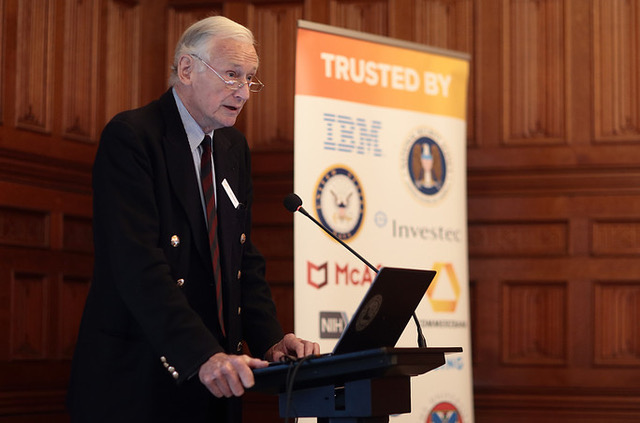Bridgeworks CEO, David Trossell features on the cover of GPSJ (Government Public Sector Journal) this summer to speak about how UK technology is accelerating data to discover a cure for COVID-19.

August 18, 2020
Public sector digital transformation: Helping enterprises to survive the COVID-19 pandemic
With furlough and support for businesses and the self-employed ending soon, the stark impact of the COVID-19 pandemic is being felt by individuals and organisations of all sizes. Government and public sector organisations are doing their utmost to support as many people and organisations as they can, and this has put pressure on their websites and their ability to offer online services, as well as on their ability to respond and communicate with everyone in need of assistance.
So, how can government and public sector organisations help enterprises as well as individuals to survive the global COVID-19 pandemic? Well, the government can offer financial support, such as the Coronavirus Job Retention Scheme, which enabled organisations to furlough their staff with the government picking up 80% of employment costs.
Help has also been given to the self-employed through the Self-Employment Income Support Scheme. As well as grants, businesses have been able to access loans, and the Stay at Home policy has transformed the working landscape by showing that remote working can work. However, as lockdown eases, there are equally questions about how the government can continue to encourage enterprises to retain staff, rather than cut jobs.

Increasing digital demand
The demand for access to many of the services, loans and grants – particularly as many public sector organisations have also in kind furloughed many of their own employees – has put an increasing load on the government and public sector – including from a website accessibility and an IT perspective. With nearly everyone at or working from home seeking clarity and information, the pressure on government and public sector services has been several magnitudes larger than normal, and the ability to scale and maintain services must have been a real challenge.
Cyber-security concerns became apparent, when it became clear that cyber-criminals were keen to use the COVID-19 pandemic to exploit people’s fears to extort money out of them. Hacking also became a major problem – even for public sector organisations. Sometimes we see the very worst of humanity during the worst catastrophe of a lifetime, with cyber-attacks on medical and other organisations. It is so easy to overlook security whilst fighting this virus. That’s why moving the data offsite securely to a disaster recovery site was and is imperative to recover from these encryption attacks.
Internet positives
Let’s face it, the internet comes in for a lot of criticism with its email spams, cyber-attacks, phishing email, botnets for attacks and more concerning, a worldwide platform for extremism and false information. But before we condemn and blame it for all evils, how would we have survived this pandemic without it? In some ways we have been, and I am not dismissing all the deaths and suffering the world has gone through this year, we are lucky that it has happened in this decade and not in the 90’s or 80’s.
Just think back (for those that are old enough and those that are not, ask your parents) to the early days of the internet with dial-up modems running at between 4.8Kb and 9.6kbs – yes kilobits. How would you have been able to work from home, search the internet for information, communicate with groups of colleagues worldwide, continue working to keep the economy working as best as possible, place orders for food and goods to be delivered to your door or office? Those types of tasks, and more – including applying for grants and loans in the way we do today would have been rare, if not largely impossible to do in the same manner that we expect them to occur now.
The web has been keeping us safe and well during the lockdown. If the pandemic had occurred in the 1980s and 90’s, how would we have managed to feed ourselves during lockdown? Instead of the internet, we would have relied on the radio, television, newspapers and perhaps even an Orwellian picture of “speaker vans” touring the country broadcasting their message for information. So, how would we know the truth? The web enables individuals, businesses and public sector organisations to not only deliver services and to communicate, but to also gain access to a widening range of sources.
So, despite all its failings, the internet has made this pandemic much safer for us than it would have been only a few short years ago, and that has to be somewhat down to the credit of our public sector, and the information and advice provided via their websites. Not only for us as individuals but, as a CEO to help keep my staff productive and safe.
In some ways, the internet with the bandwidth and capacity now available to the home has been the saviour for many individuals, helping them to keep working and for enterprises to continue functioning while keeping their staff safe.
WANs and Digital transformation
This pandemic and work from home has forced many CEOs and CIOs, both in industry and in the public sector, to rethink their digital transformation strategy from “would be nice” to “let’s get this done now!” With digital transformation, those organisations that are dispersed geographically, need to be able to rely on high speed and secure data transmission over long-distance WANs.
In reality, it should not take a pandemic to force digital transformation, but many are using this opportunity to move some of their processes and storage to the cloud. Many are also now investing in the cloud for back-up-as-a-service (BUaaS) and Disaster-Recovery-as-a-Service (DRaaS), along with using it as an archive. What many fail to appreciate is the time to move the data in and out of the cloud. This is where WAN Acceleration can play a big part in moving data to the cloud as part of a digital transformation upload or as part of a BU/DRaas.
WAN Optimisation has traditionally been used as solution. However, with high bandwidth WAN connections and encrypted data mandatory in many fields, WAN Optimisation struggles to cope now – even at the lower bandwidths. To maximise the capacity of these new high bandwidth WAN capabilities we need to start to look at WAN Acceleration.
This technology mitigates the effects of latency and packet loss. it is both data and protocol agnostic. This means it can accommodate multiple different transfer protocols simultaneously, it can accelerate encrypted data without the need to change the data. This has the added advantage of moving the encryption from the firewall and use the more powerful servers to perform the task and move the keys from the firewall to deep inside the organisation.
Big data proliferation
We are creating massive amounts of data as we hunt for the cure. It is not only critical to share the vast amounts of data created and shared with other organisations, such as universities and pharmaceuticals as soon as possible, but it is critical to protect this data, too. Where we previously did this once a day, we should now think about it multiple times a day and the need to put distance between site means. That is why we offered our products to medical research organisations, universities, government and public sector organisations, and private enterprises involved in the fight against COVID-19 – as better utilised WANs can improve big data analysis and project collaboration.
Meanwhile, the way we are now, and for the foreseeable future, work has changed out of all recognition from the beginning of the year. The daily commute into the workplace has, for the moment, all but disappeared. This pandemic has shown that we can be as, if not more efficient when working from home. The air quality has risen dramatically, and many are questioning the rationale of the commute and the central office. Many are seeing more of their family than ever before. The new normal has brought about many positive changes, which can be supported by the public sector with digital transformation being at the heart of everything they do, and everything everyone does.
Click here to read the entire article on Government Public Sector Journal.




